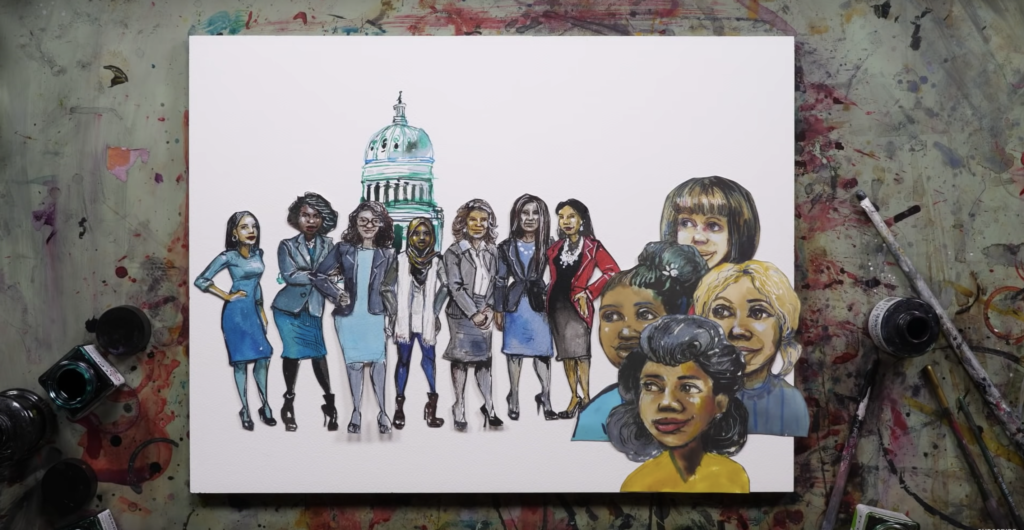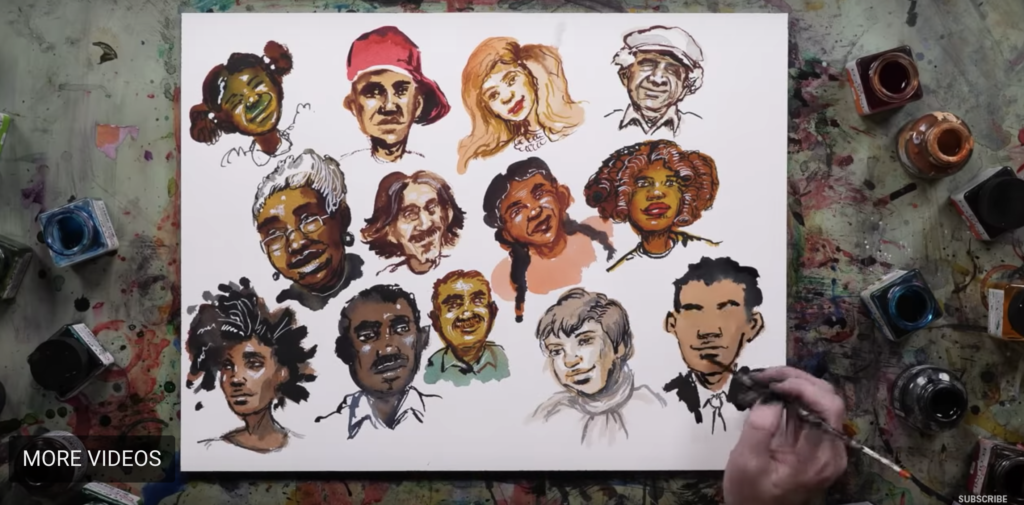Futures work happens across society, from pop culture to education, business to government. Today’s case in point: a video vision of the future, a political scenario, a digital story narrated by none other than Alexandria Ocasio-Cortez.
“A Message From the Future With Alexandria Ocasio-Cortez” is a scenario, imagining the Green New Deal being passed and implemented. The video is very short. Take a look:
Let me share some thoughts as someone who practices and studies both futuring and digital storytelling. I will focus on those two areas here, and leave off political analysis for now.
This video has many features well known in the futures community. It sketches out a scenario of what the world could look like if certain things come to pass – in this case, if some form of the Green New Deal came into being. It combines both large-scale trends (policy changes, ecological transformation) and personal details (our heroine’s career). The details give us enough grounding to imagine not only this possible future, but ourselves within it.
“Message” also positions itself as being from the future, right off the bat, with its first line and opening image: “Ah, the bullet train from New York to DC…” (Is that white hair on AOC’s future head in the second drawing?) This is a classic literary trope (see below), and one used by many forecasting strategies and workshop prompts like The Thing From the Future. The approach doesn’t speak from possibility, but certainty, which can make it easier to grasp.
this is the tactic that Jeff Bezos insists on at Amazon for the launch of new internal projects: ambitious internal entrepreneurs must submit a memo describing the project as a fait accompli, and if the description is compelling and exciting enough, they get the resources to make it happen.
But it’s not just Amazon: as anthropologist Gabriella Coleman describes in Hacker, Hoaxer, Whistleblower, Spy, her seminal 2014 study of Anonymous, this is how Anon ops get started: an individual Anon makes a video announcing victory in some op that hasn’t taken place yet, and if enough other anons are inspired by it to make it happen, then it happens.
That narrative strategy also makes “A Message from the Future” clearly science fiction. Its retrospective stance recalls many stories from the future, like Bellamy’s 1888 classic Looking Backward, which takes place in the far-off future of the year 2000, 112 years away, or William Morris’ 1890 rejoinder, News From Nowhere, which also imagines a distant time. In both of those stories the narrator wakes up in the future and has to understand the new world, along with how it came to past. For a more recent example see The Age of Stupid (2009), which takes place on a ravaged Earth in 2055, and whose title refers to… our time as seen from that future, as we so badly failed to do anything to stop climate change’s subsequent disasters.
That narrative strategy lets the story reach back into the past before the moment of publication, in order to explain how the future came to be, deepening the scenario’s foundation. “Message” goes as far as 1977 to lay the groundwork, advancing through the history of climate science, then touching on the recent devastation of Puerto Rico. Next it proceeds past our present moment, building up towards the future, starting with a 2020 Democratic triumph in Congress and the White House. In the years following Green New Deal programs are implemented, a disastrous hurricane that stomps part of Miami into the Atlantic, and a new generation enters politics. The video actually covers a lot of ground in just seven minutes.
As a digital story, “Message” does some interesting multimedia things. It pairs spoken word narration (one transcript here) with reflective images, the latter being (or simulating in the process of being) hand drawn. AOC’s voice brims with energy and passion, a good example of what StoryCenter refers to as “the gift of voice.” Several sound effects accentuate key details, like a boiling sound behind a rising temperature or a ticking clock backing words describing a tight timeline. The musical soundtrack is fairly low-key, and only appears during the first 45 and last 80 seconds, but still emits a quietly propulsive energy, ultimately accentuating the theme of progress.

The images (splendidly created by Molly Crabapple) suggest a work in progress through their in-process drawing, washes of color, some inkblots, and the placement of cutouts. This effect is heightened by the visuals’ framing in artistic tools (paints, brushes, a board) and their side effects (paint splatters). I think this in-process, unfinished approach makes the future easier to imagine, being closer to our present, slap-dash reality than would be a gleamy future fantasy.
Those visuals also emphasize people of color and women – a majority of each on screen, I think, overall – which echoes Democratic politics. See the preceding screenshot, or this one:

The StoryCenter story mode usually emphasizes biographical or autobiographical content, which “Message” does not, as it largely concerns massive, national and systematic transformation. But it does provide characters, like Iliana (from 5:03 on, and probably one of the children mentioned at :20) and our narrator. They ground the big picture, rendering macro changes personal and more relatable.
To be clear, “Message” is not so much a forecast as a work of advocacy. It depicts not just one world that could occur based on certain trends bearing out, but a future it wants us to strive for. This is a preferred future, an aspirational scenario. As Crabapple put it in an interview, “Me and Naomi and Avi and Kim and Jim and Alexandria, we wanted to create a vision of a hopeful, beautiful future, of a future that we wanted to live in.”
It’s great to see both digital storytelling and futures work in public use at the national political level.





That is really a remarkable piece of work, especially considering that she wrote it herself and narrates it. I can’t remember ever seeing anything quite like it from any other politician. I hope it gets wide exposure as much because it speaks so well of her as it also speaks clearly about what is possible.
Indeed.
AOC is a remarkable communicator in an age of idiocy. I support much of what I’ve heard about the Green New Deal, but there’s another piece she cannot communicate, for fear of losing moderate voters.
I’m not running for anything, but this former Earth First! member wants to ask the big question: When will the world try men like those on the Exxon-Mobil board for crimes against humanity? I want their wealth and freedom stripped from them, period. We no longer hang such monsters by their necks in Spandau Prison, but we can lock them up for the rest of their lives and take all their money away.
They know about climate change and profit from this. It’s as big an evil as that perpetuated by the totalitarian regimes of the last century. Even worse, in some ways: this is done not out of a twisted ideology but out of pure lust for profits.
Can we apply lessons from cracking down on tobacco? Or perhaps the Pecora Commission?
Pingback: unknown | Connection not Content